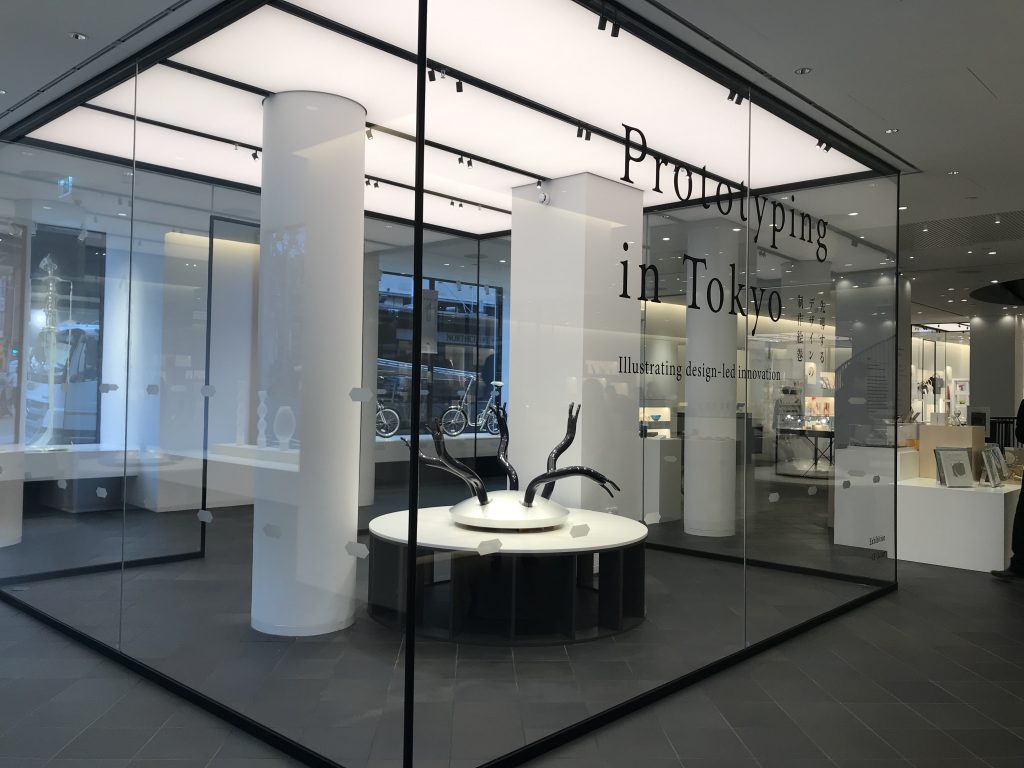This week 3D Printing Industry was invited to Kensington High Street, one of the most affluent retail locations in London, for an exhibition preview featuring the cutting edge of additive manufacturing and robotics.
Located in Japan House, a cultural centre, restaurant and store celebrating the best of the East Asian nation’s design, Prototyping in Tokyo showcases the bio-inspired work of Professor Yamanaka Shunji and his lab at the University of Tokyo. Almost entirely 3D printed the interactive, scurrying creatures, robotic arms and prosthetic devices in this exhibit present the Yamanaka Lab’s vision of the future, and the potential of mechanical engineering. Distilling the work done at the lab Professor Yamanaka says, “It’s almost a kind of dream and it has good potential for the future,”
“But the driving force is our minds, our curiosity.”
Professor Yamanaka at the Institute of Industrial Science, Tokyo
First and foremost a design engineer, Professor Yamanaka has pioneered user friendly interfaces for everything from DVD players to cars. As an example, he demonstrates a concept drawing for his design of the IC Card reader now used in Suica Automatic Ticket Gates at train stations all across Japan.
In the University of Tokyo, Professor Yamanaka’s research group of 15 researchers, PhD students and undergraduates is part of the Institute of Industrial Science (IIS) encompassing around 100 labs from all engineering disciplines.
The Prototyping in Tokyo exhibition in London follows a popular display of the work at Japan House Los Angeles, and it is the first time these pieces have been shown in the UK.

Illusive soft robotics
For the duration of Prototyping in Tokyo, visitors to Japan House London will be greeted by a glass cage containing a round table with five robotic arms. Named Flagella, this Dr. Octopus-like installation is an early exploration of biomimicry and robotics by Professor Yamanaka. In motion, all of the arms appear to stretch and wave like the searching feelers of a slug or some other sinewy creature. In truth though, every part of the robot is made from a hard shiny plastic, cut and assembled in a way that makes it appear rubbery. As Professor Yamanaka explains, “If you are thinking this robot looks soft then we have succeeded.”
Behind Flagella, a window display houses the first six 3D printed objects of Prototyping in Tokyo. Resembling vases, the Parametic Tube spirals appear to breathe in and out making them seem flexible, though again the material is relatively rigid, 3D printed from nylon polyamide powder.

Robots ready to crawl out of the 3D printer
The main body of the exhibition is displayed in the basement of the building. Here, 3D printed objects laden wavy tables made to look like Japanese paper scrolls.
The inspiration for these products, taking the shape of articulated lizards, textured relief tiles, origami vases, and millipedal machines, were the questions “What can we do now? And what can’t we do [with 3D printing]?”
Through experimentation, the Yamanaka lab has found the complex niches in mechanical design best suited to 3D printing. Exemplary of this concept are the READY TO CRAWL robots. Each 3D printed as a single piece (except internal electronics) the devices have their own “mode of locomotion,” capable of walking, circling, and jittering when activated by a light sensor.
None of the robots in this collection however have been designed for a particular application. An incredibly liberating aspect of the projects Professor Yamanaka explains, “As you can see our prototypes are almost useless. That is a very important point.”
“Now it’s useless, but we believe that point of view will make a new view for the future.”
SLS and future directions
The 3D printer used for Prototyping in Tokyo’s experiments in mechanical design was made by a colleague of Professor Yamanka named Professor Niino Toshiki. Professor Niino is part responsible for catalyzing Professor Yamanaka’s 3D printing research, which has now been in progress for around 5 years.
Also based at IIS Tokyo, Professor Niino heads up the Laboratory for Additive Manufacturing Science (LAMS) and, as part of his research, has developed an industrial SLS 3D printer.
Furthering their work with 3D printing, the Yamanka Lab is now looking toward bioengineering prototypes working with live and artificial tissues.
Officially opening on 16 January, Prototyping in Tokyo at Japan House London will run for two months through to 17th March 2019.
Is this an award winning Creative Use of 3D Printing? Nominate the Yamanaka Lab and more in the 2019 3D Printing Industry Awards.
For more of the latest 3D printing exhibits and news subscribe to our newsletter, like us on Facebook and follow 3D Printing Industry on Twitter. For career opportunities, search 3D Printing Jobs.
Featured image shows A READY TO CRAWL robot – part of Prototyping in Tokyo 2019 at Japan House. Photo by Beau Jackson


